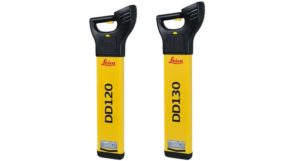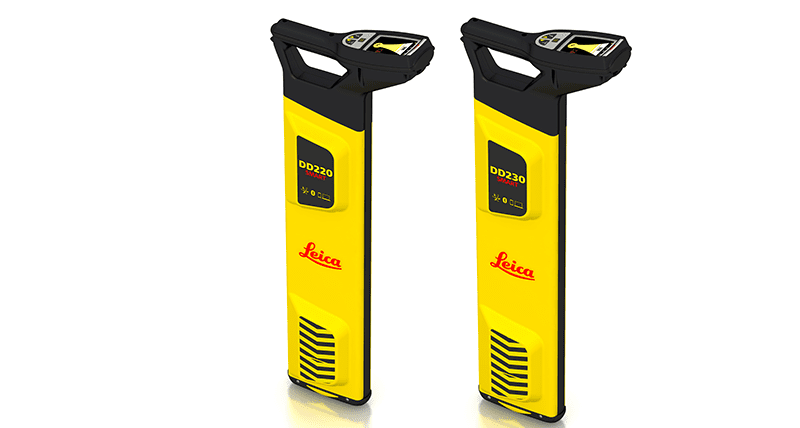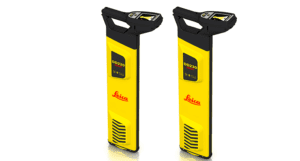Whenever site workers carry out an excavation, it inevitably brings them to close range with underground utilities such as water, telecommunications, gas, and electricity. Therefore, it is vital that you consider the specific locations of all the buried utilities before the excavation process and during. If you want to avoid utility strikes, it would be best to do proper locating by using a wire locator. You can use a wire locator to detect the proximity and presence of buried utilities.
What is a Wire Locator?
Wire locators allow you to find what path underground wires have taken. Usually, they are made up of two parts, a receiver, and a locator. Typically, the transmitter sets the signal at a specific frequency. The receiver picks up the signal from the transmitter, which allows a locator operator to follow the signal's direction and track the cable that has been located.
Usually, AC travels along a cable, creating an electromagnetic field that a wire locator can detect. There are plenty of underground utilities spread all over, and the site you may be excavating will likely have an electric transmission buried under. Active location and passive location are the two primary detection principles.
- The active location adds a particular signal utilizing a signal transmitter on a utility that has been located.
- Passive location is used in locating electromagnetic fields that are present on a utility.
You will save money and time when you invest in an underground wire locator since you will quickly locate the paths of any invisible wires. Essentially, an underground wire locator can measure the depth of the invisible wires fast, accurately, and efficiently. It is more powerful than other wire tracers.
Some wire locators can show you what breaks can happen and stop you from digging the wrong area. There are different brands and models of wire locators you can choose from, such as Leica. As a result, finding the best underground wire locator can be a daunting process. Read on to learn more about wire locators.
Best Underground Utility Locating Equipment
The Leica models are some of the best wire locators, and they come in different models, and each has its unique features. Below are some of the best wire locators in the market.
Leica DD 130 Cable Underground Utility Locator
The Leica DD 130 is a basic locator that uses radio and power modes. This locator can be used without the transmitter to locate power lines under potential metallic lines. However, when you utilize it with a transmitter, you will locate extra metallic lines and also take depth measurements. This locator has additional features of lower frequency and current measurements that help identify sewer cameras and long-distance tracing.
This locator comes with alkaline batteries, a one-year warranty, and user manuals. It is compatible with the DA230 signal transmitter range. It features an extra 512 Hz/640 Hz signal transmission detection, shallow service, hazard zone, and an extended depth zone when paired with a sonde or signal transmission.
| Pros | Cons |
| It comes with 33kHz, 8kHz, 640kHz, and 512kHz frequencies. This mix of high and low frequencies will give you flexibility, and you can use the long-distance tracing frequency, 512Hz or 60Hz,, or the standard avoidance frequency, 33kHz. | It has no cable tracking |
| It has a hazard zone that alerts you when you are close to the locator to avoid striking the cables. | |
| You can easily identify cables using the numeric signal strength readout that this model features. | |
| It has a self-test that is inbuilt, which you can easily use to check if the units are working correctly. | |
| This locator is easy to use and comes with a user manual that you can use as a guide. |
Leica DD 120 Cable Underground Utility Locator
This utility locator is one of the DD 100 series and has advanced automatic controls, making it one of the easiest equipment to use. Generally, operating it requires minimal user experience. This underground wire detector will help you detect the position of any buried pipes or cables before excavation which helps prevent asset damage risks, operator injury, and any associated costs.
To attain an improved application and accuracy range, you should use the Leica DD 100 series with the Digisystem accessories or the DA230 or DA220 signal transmitter. It comes with user manuals, alkaline batteries, and a one-year warranty.
| Pros | Cons |
| It has a hazard zone that alerts you when you are within thirty centimeters of the locator, allowing you to change your method of breaking the ground to avoid striking any cables. | It offers no GIS compatibility |
| It comes with a signal strength indicator that is created for you to identify cables quickly. | It has cable tracking |
| It has an in-built self-test that can easily be performed by users or staff to ensure the units are working appropriately. You can carry out this test when you are handing it over to new users or off-hiring locators. | |
| It is pretty easy to use since it needs a tiny adjustment to locate a service. You can remove the sensitivity control to ensure that you do not miss detectable services. |
Leica DD 230 SMART Utility Locator Solution
If you break ground or are a utility professional, this is one of the best detection solutions in the market, especially when you get the whole portfolio. This includes signal transmitters, DX shield software, and the DD 230 or 220 cable locator series. The DD SMART series utilizes digital signal processing to locate underground assets more accurately, faster, and more profound than any system.
This solution will allow you to detect any utilities buried underground, access and transfer data remotely across multiple sites to a service that is hosted for different users to manage site activities. It also records information to map buried utilities and manage site activities, protecting your utilities, personnel, and assets.
This model is quite expensive, but it is a worthwhile investment given all the features it comes with. Other than the features, you can be sure that you will have peace of mind when you need to locate a utility in a limited period, making it worth the cost.
| Pros | Cons |
| It offers your workers safety, which allows them to work faster. It has diagnostics, usage alerts, and onboard video support that protects your site workers and assets with the SMART solution. DD SMART utility locators and DX Shield software offer companies a mechanism to go over and report on the use of assets, allowing the companies to enhance their process and product usage. | It is quite pricey |
| This underground wire detector offers you accuracy. You can accurately trace and locate your utilities through straightforward workflow, which increases your ability to analyze the performance of your assets in little time. It also allows you to improve and personalize reports to offer more actionable outcomes, improving the site workflow and safety. | |
| You do not have to do multiple sweeps because of the new technology on this locator. | |
| The Leica DX shield makes it easy to streamline all your operations. | |
| The DX Shield software and DD SMART locators offer connectivity which saves time and offers you more productivity. | |
| It comes with an instruction manual that is easy to go over. | |
| The SMART technology allows you to connect it to your phone’s Bluetooth. When this is paired with GPS technology, it makes it easy to map out where the utilities are located on the plans. |
Leica DD 220 SMART Utility Locator Solution
The DD 220 SMART is relatively affordable compared to the DD 230 SMART, and even better is that in terms of functionality, they are almost the same. While it is accurate, it is not as accurate as of the DD 230 SMART. This locator is intuitive and easy to use, which simplifies detecting utilities that are buried underground. Using this locator will boost your confidence.
It comes with a visible display and an automated pinpointing technology. You can quickly discover buried utilities even in densely packed areas. Diagnostics, usage alerts, and onboard video support are combined to protect utilities and operators and enhance product use.
If you are a professional who wants to streamline your utility locating operations, this locator is a good choice. Generally, the DD SMART locators often create a one-source solution.
Some of the features of the DD 220 SMART include:
Web calibration verification
IP66 rating that protects you from water and dust
Up to 23 feet of depth detection
Auto, radio, and power modes
SMART technology, which includes an 8GB internal memory, Bluetooth, and GPS
Onboard video user guides
Different transmitter modes 8kHz, 33kHz, and 131kHz
| Pros | Cons |
| It comes with the DX Shield software, which allows for utility analysis and a connection between the SMART connectors that is pretty convenient, saves time, and enhances productivity. | It is not compatible with GIS |
| The DX Shield software and this underground utility locator open the door to a world connected at all times from any location. | |
| It has the DX Manager Shield, which will offer your company a local solution that is easily scalable and is found on a one-source platform. | |
| This locator will offer you accuracy. | |
| You are guaranteed safety when using this locator. |
Factors to Consider When Purchasing a Wire Locator
There are plenty of wire locators in the market that you can choose from, but you should consider plenty of factors before buying a locator. This include
- The stick receiver, which is vital for long locating
- The screen, especially if you are a professional, because you can watch the graphic displaying where the cable is.
- How deep your tool can measure
- The frequency the locator generates
- Detection mode
How are Underground Wire Locators Used?
Before using or purchasing an underground wire locator, you must understand its fundamental principles. Having this information ensures that you are well prepared to use an underground locator when you get one. Although, it is worth noting that the Leica models come with a user manual that is pretty easy to go over, and they are also pretty easy to use, even for complete beginners.
However, it helps to familiarize yourself with all the basics because it improves your ability to trace the distance and determine the target depth and location. As discussed, there are two primary methods of underground pipe and wire location. Note that they all need the underground wire to be an electrical conductor. Simply put, they should be metallic. Most locators have three modes, power, radio, and auto.
Auto Mode Principles
All the Leica cable locators come with the auto mode, which combines the perks of simultaneous detection in Radio and Power modes. This mode helps you confirm if there are any utilities available on the initial site visit.
Radio Mode Principles
Usually, long wave radio signals with a low frequency transmitted from a radio mast can go through the ground, instigating a signal to the utilities with a metallic composition. The utilities will re-emit these signals, and you can trace and locate them when your locator is on Radio mode.
Power Mode Principle
Usually, when an AC passes through your utilities, it gives off an electromagnetic signal. Therefore, if you are a surveyor and use the Leica locator models, you can detect the position of the cables buried by looking for the electromagnetic field. Using a cable locator to locate electrical cables will only detect utilities with a live current. Therefore, this means that you will not be able to detect the buried electric cables using a cable locator when the lights are switched off, and there is no current flowing through the cables.
Active Location
A considerable percentage of utilities that are buried will be easy to miss if you are only detecting in passive mode. You cannot be sure that it is safe to excavate an area simply because you detected nothing after a single sweep. If you want to enhance your detection method, a signal transmitter and signal cable locator will make a significant difference. This unit is small and portable, and it prompts a signal to a pipe or cable that you can trace with a cable locator. Essentially, this is what active locating is.
How to Apply an Active Signal
When you use a locator on its own to search for passive signals, you will not detect most of the buried utilities. It is also worth noting that not all utilities radiate radio signals or carry live currents. They may need a signal to be directly induced to the utility for you to locate them. You will have to apply an electrical signal or current to the metallic utility that is buried to detect these utilities. Doing this makes it easier for you to trace and identify this utility using your locator.
Connection Mode
This mode is one of the most effective ways to apply a signal to your utilities. It would be best to use the connection mode if you can, even more so when you are doing a depth reading. The signal transmitter's output can be connected to a pipe or cable directly. Fundamentally, a connection to a ground connection point or earth stake completes a circuit. You can positively trace and identify the path when you directly apply the signal to the utility.
Induction Mode
This is a quick and straightforward way of applying a signal to a utility without making any physical connections. Instead, a magnetic field will be generated into the ground through an internal aerial. Therefore, any metallic utilities buried and routed close to the signal transmitter will be prompted by the signal. Ultimately, this allows the utility to be traced and located using a cable locator.

How to Locate the Signal
Suppose you are looking to identify a magnetic field that is being emitted from a utility that is buried underground. In that case, your locator will often utilize the aerials built of wires wrapped on the ferrite rods. These are often utilized to amplify tiny electromagnetic signals that the utility emits and give feedback on the circuitry of the locator.
Contact Us Quinn Equipment
Leica offers some of the best wire locators in the market, and they all provide a range of impressive features. Any person using these locators will have confidence since they are not only easy to use, but they also come with a user manual that is pretty easy to understand if you are looking for wire locators. The Leica DD SMART series are a worthwhile investment. Contact us for the best wire locator.








